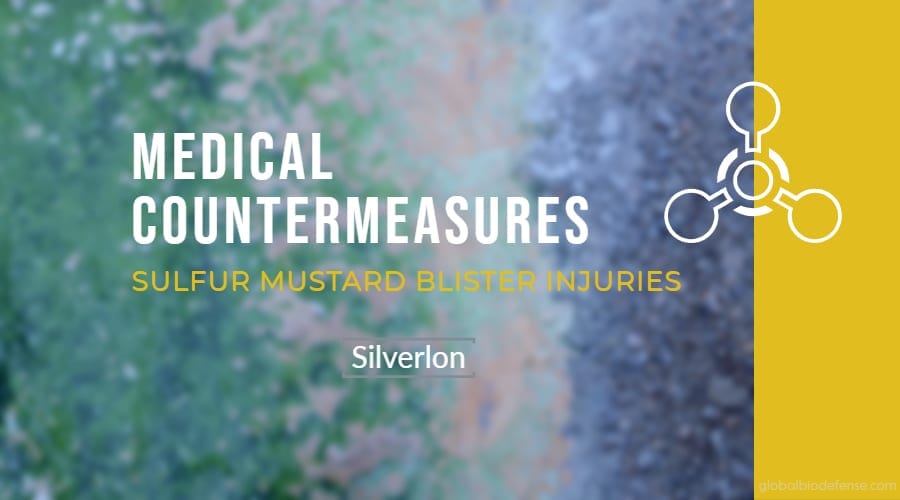The U.S. Food and Drug Administration (FDA) clearance Silverlon, a product to manage certain blister injuries caused by sulfur mustard, marks the first medical countermeasure for this chemical threat.
Silverlon is a silver-plated nylon dressing available commercially and used widely to aid in the management of acute skin wounds and first- and second-degree thermal burns. The silver plating helps kill bacteria within the dressing, and one dressing can be used for up to seven days. This allows for fewer dressing changes, which reduces the burden on caregivers and minimizes the pain and damage that would occur if the wound was disturbed.
“Chemical weapons like sulfur mustard cause horrific, painful, and life-altering injuries, yet in the 100-year history of sulfur mustard use, no medical countermeasures existed – until now,” said Biomedical Advanced Research and Development Authority (BARDA) Director Rick Bright, Ph.D. “This clearance exemplifies BARDA’s ongoing commitment to our partners and the nation as we seek out promising technologies and products to improve our nation’s health security and protect Americans.”
Argentum Medical, LLC, has received FDA clearances for multiple indications for Silverlon since 2003. Silverlon is incorporated into numerous deployed Medical Tactical Combat Casualty Care kits and is also supplied in bulk to Combat and Support Hospitals and Tactical Forward Surgical Teams. The wound dressing is also included in burn care protocols in the Joint Theater Trauma System Clinical Practice Guideline.
Silverlon burn products and protocols are extensively used by the US Army and by US Air Force Critical Care Air Transport (CCAT) teams and are taught at the US Air Force School of Aerospace Medicine Critical Care Air Transport Basic Course.
Beyond the military, Silverlon dressings are used today by surgeons and other healthcare professionals around the world on surgical wounds, in negative pressure wound therapy, on chronic wounds, burns, skin grafts, and IV and catheter-related wounds.
BARDA provided technical expertise and funding to support the studies necessary to show that the product, Silverlon, is appropriate for use on first- and second-degree skin burns caused by exposure to sulfur mustard.
“The FDA plays an important role in preparing our nation for a range of threats, including chemical, biological, radiological, and nuclear threats, providing guidance and support for the development of medical countermeasures that can be used safely, effectively and reliably during public health emergencies,” said Acting FDA Commissioner Ned Sharpless, M.D.
BARDA’s support for this additional indication began in 2013 as part of the federal government’s effort to repurpose approved drugs and medical products to save lives and reduce injury in an attack on the United States.
This multi-purpose approach has proven to be cost-effective in preparing mass casualty emergencies from chemical, biological, and radiological agents. Repurposing products in widespread use additionally ensures first responders have a familiar product to use in a time of crisis.
Beginning in 2015, BARDA used Project BioShield authorities and the Project BioShield Special Reserve Fund to purchase Silverlon for the Strategy National Stockpile as part of BARDA’s burn countermeasure program. BARDA continues to work with Argentum on studies necessary for FDA clearance of Silverlon for use on radiation burns.



